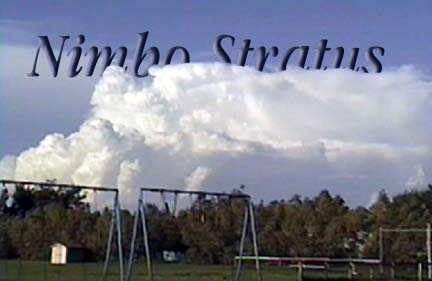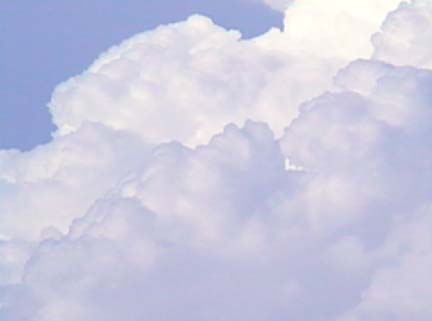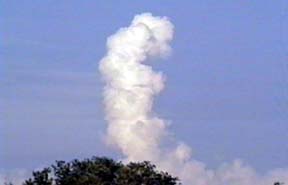
FTLComm - Tisdale
July 30, 1999
Having spent ten years of my life flying around in a light aircraft this morning's article certainly got me looking skyward and late this afternoon the cold front passed by us just to the North and with it a set of outstanding clouds.
As you can see there were other
 aviators who noticed the passing and were pleased to note that they were
located well out of its path.
aviators who noticed the passing and were pleased to note that they were
located well out of its path.Because of its enormous altitude this form of tower
 cumulus cloud
punches its
cumulus cloud
punches its way well above thirty thousand feet and because of its flat bottom is given the second part of its name "stratus"
Because of the differential in temperature of the air masses the giant low pressure area well to the South of us created a clash that produces turbulent weather. Aviators know not to venture closer then twenty miles of such cloud formations because of the vertical winds associated with them. The picture on the right is using a telephoto lens to peer into the tumbling and rising wet air as it is quickly chilled by the very cold air into which it is rising.
The picture below right also is the same cloud only a little further down its Western face
 which is
altered from second
which is
altered from secondto second.
This air mass resulted in weather warning being issued for the area South of La Ronge but it passed well North of us even though, because of its altitude it was clearly visible.
Shafts of vertically moving air drive up and down such a cloud formation and of course in the midst of this turmoil there is rising water vapour that becomes water droplets and as they fall they are increased in size only to be pushed aloft by rising air to freeze into pellets, the process repeats and hail is formed.
The main engine is the very warm air that is trapped below the very cold air and continues to rise upward. This rare and rather spectacular formation captured below is a great example of the hot damp air punching its way skyward into extremely cold air. Such a column as this would need a source of very warm land or water to produce this geyser of hot air. Small ones like this often are seen but this is the largest such formation I can recall having witnessed.

